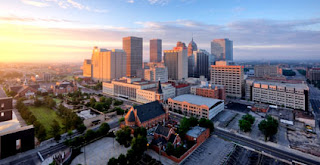These are 10 great migrations that leave us awestruck;
1. Great Migrations: WildebeestSeeing just one animal in the wild can be a unique experience; seeing thousands moving at one time is unforgettable. Here are 10 of nature’s greatest animal spectacles.
Text by Heidi Schuessler, Bing Travel; photo editing by Connie Ricca.
One of nature’s greatest spectacles is the migration of 1.5 million wildebeest as they move from the Masai Mara in Kenya to the plains of the Serengeti, near the Ngorongoro Crater. While drought often forces them to start moving in May or June, their journey is virtually continuous as they travel constantly in search of food and greener pastures. Safari companies in Kenya and Tanzania build trips around viewing the “great migration,” and to see the wildebeest crossing the Mara River en masse is a once-in-a-lifetime experience.
2. Great Migrations: Monarch butterflies
Thin wings and daunting distances can’t hamper the annual winter migration of monarch butterflies to their two wintering grounds in California and Mexico. Butterflies west of the Rockies flit their way to the eucalyptus forests of southern California between October and February; towns good for viewing include Pismo Beach, Santa Cruz and Malibu. Butterflies from east of the Rockies migrate 2,500 miles to the oyamel forests of Michoacan, Mexico, and flock in such great number to the Monarch Butterfly Biosphere Reserve and El Rosario Sanctuary that the trees bend with their weight. Each year more than 200 million colorful monarchs make the perilous journey, made more difficult by destruction of habitat and drought in Texas.
3. Great Migrations: Polar bears
Each October, approximately 1,000 polar bears converge on the small town of Churchill, Manitoba, while they wait for the Hudson Bay to freeze over. Once it does, the bears walk more than 100 miles over the ice in their hunt for seals. The migration typically lasts through the end of November and makes a fabulous sight for tourists who trek to the barren tundra in hopes of sighting the white bears, usually from the safety of tundra buggies. If you can’t make it to Churchill, you can now watch the migration via streaming webcam.
4. Great Migrations: Caribou

The Porcupine caribou herd in Alaska is 150,000 animals strong, and each year the herd travels more than 400 miles between its winter grounds — in the Brooks Range and Canadian Yukon — and its summer calving ground in the Arctic National Wildlife Refuge. The animals spend November to April foraging for food below the tree line, sometimes in temperatures as low as minus 58 degrees Fahrenheit. In spring, the pregnant cows start to move north to the calving grounds, followed by the bulls in June. The entire herd is always on the move, sometimes just to find a breezy spot where they can escape summer’s pesky mosquitoes. By September, the weather turns cool again and the animals start moving south to start the cycle over again. Migration routes vary each year, but towns like Kotzebue and Arctic Village, Alaska, are sometimes good places to spot caribou.
5. Great Migrations: Gray whales

The longest migration of any mammal on Earth belongs to the gray whale, which travels up to 7,000 miles — one way — from Alaska’s Bering and Chuchki seas, where food is plentiful, to the coast of Baja California. The whales begin moving south in October and travel along the Pacific Coast for up to three months — they’re slow swimmers, covering about five miles a day — before they reach the warm waters of San Ignacio Lagoon. The calves are born there, typically in late December and January, and in February the cycle starts all over again: The males start traveling north, followed soon after by the females and newborn calves. Whale-watching is popular all along the coast; tours are available in San Diego (January to February), to central Oregon (late March) and Washington (April to May).
6. Great Migrations: Red Crab

Australia’s Christmas Island National Park covers more than half of this tropical island in the Indian Ocean. The park is home to the Abbott's booby, the rare frigate bird — and 50 million red crabs. When these bright crustaceans migrate from the inland forests to the coast to breed, they move in such large numbers that roads around the island are closed to let them pass safely. Local conservationists have also created crab bridges and crab crossings to help them in their journey, which coincides with the start of the rainy season in October or November.
7. Great Migrations: American Bison

Yellowstone National Park is home to 3,700 American bison that migrate from the high plateaus in winter to lower grasslands in search of food. Encountering a 2,000-pound bull in the wild is an exciting part of any Yellowstone visit, and according to the National Park Service, Yellowstone is the only place in America where bison have lived continuously since prehistoric times. Unfortunately, the bison are at the center of an ongoing controversy. During harsh winters, they will often migrate beyond the park into neighboring lands, and the park service says, “Bison require special attention because many have been exposed to the bacteria that causes brucellosis, a disease that also infects domestic cattle.” Yellowstone’s two herds can be typically seen in the Lamar Valley, Upper and Lower Geyser Basins and Hayden Valley.
8. Great Migrations: Zebras

In Africa, the wildebeest migration often gets top billing for safari-goers’ bucket list, but Botswana’s zebra migration comes in a close second. Makgadikgadi National Park and Nxai Pan National Park are where visitors can see up to 25,000 zebras as they move in search of water during the dry season. From about June to September the animals leave the dry salt pans and congregate around water sources such as the Boteti River flowing from the Okavango Delta. Seasonal rains bring other animals as well, such as the greater flamingo, in large numbers.
9. Great Migrations: Ruby-throated hummingbird

Hummingbirds are amazing birds, and not just because they’re so small and beat their wings 53 times each second. The ruby-throated species is migratory, making its way from breeding grounds in Canada and the eastern United States to wintering grounds in southern Mexico and Central America. The jewel-colored birds (see photos) fatten up to fuel their flight, which usually includes a dangerous stretch over the open water of the Gulf of Mexico. Ruby-throated hummingbirds are mostly gone from the U.S. by late September, only to return again starting in February. (Some are visible in Florida year-round.)
10. Great Migrations: Pacific salmon

Talk about the circle of life: Pacific salmon begin their lives in fresh water, migrate to the ocean as adults, then return to their native freshwater streams to spawn and die. In the Pacific Northwest, British Columbia and Alaska, salmon of various species make the journey — sometimes as far as 2,000 miles — to fulfill their life cycle. Travelers to southeast Alaska towns of Sitka, Ketchikan, Juneau and others can watch massive king salmon returning to freshwater streams and rivers between May and July; silver, or coho, salmon run in the southeast from July to November.
Sources : Bing






































